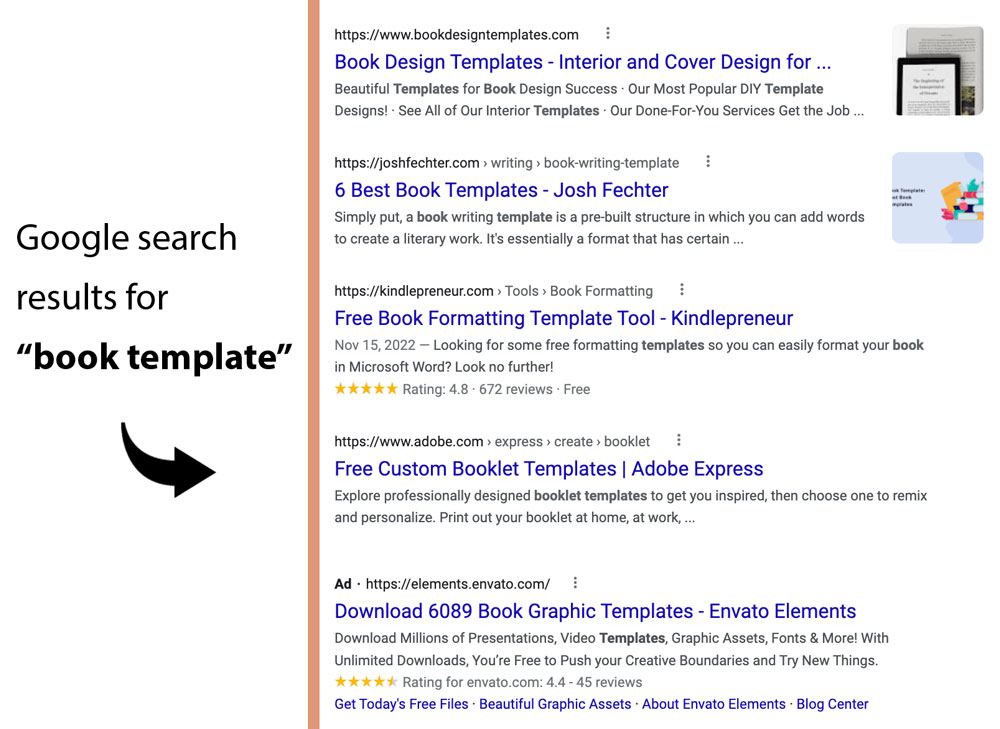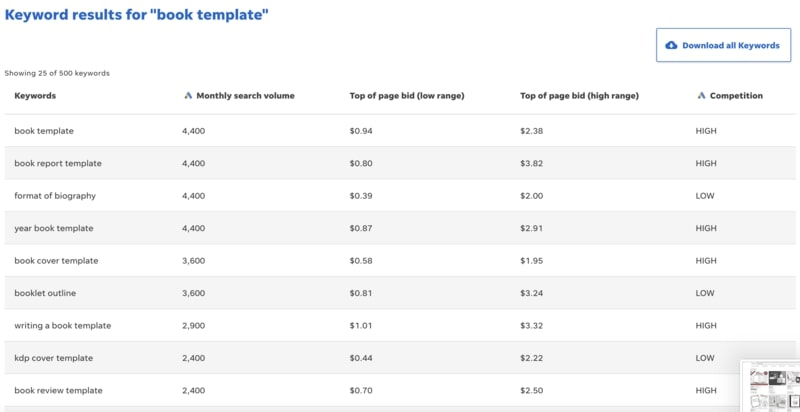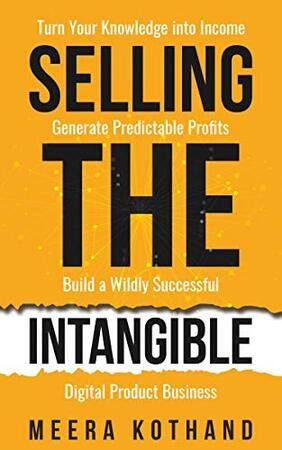Table of Contents
Do you want to make your own digital products but don’t know where to start? Are you thinking of creating digital products for diversifying your revenue? This might cross your mind regardless of the type of business you’re in. The most attractive feature of generating money through digital files is that it is accessible to anybody. It’s a simple method to supplement your income, and it may add up quickly. You may make money as a freelance writer by selling digital editorial calendars made in Google Sheets. As a nutritionist, one product you may provide is a printed food log. It might be fun to make a collection of milestone cards for weddings if you’re a wedding planner.
When dealing with digital goods, there is no need to handle stock or shipment. Your company may be “set up” without any major initial expenditure on your part. It’s as simple as making something and selling it online. In the same vein, little materials are needed to create high-quality digital products. For these reasons, selling digital products online has emerged as a viable business strategy for those seeking long-term financial security.
So how do you go about creating digital products to sell? Let’s break down what it takes to launch a successful digital product company, from idea and development through promotion. Knowing your place in the spectrum of digital sellers will help you generate more fruitful ideas for downloaded items that will appeal to and satisfy that segment of the market.
You can supplement your current business and bring in some extra cash on the side, you may want to consider selling digital items connected to your current activity. Here, you’re dealing with the same individuals who are already familiar with you or your brand, so you have a good idea of the types of digital goods they’d find useful.
Things may be a bit different if you do not have a business yet and just starting up. If you don’t have an idea what your target audience needs pick a product based on potential profit and sellability.
Come up with an idea
When creating digital products, you need an idea to start with. Coming up with the product concept to create is just as vital when launching a new digital product as it is when launching a physical one. Many artists skip this crucial stage, leading to an unmarketable digital work.
Depending on the nature of the product, building a digital equivalent can be just as time-consuming as constructing a physical equivalent. Imagine spending 20 hours on an online course, only to find out that no one is interested; or 40 hours on an app, only to find that it doesn’t resonate with users; or putting time and money into a premium newsletter, only to find that no one signs up for it.
You may prevent these flops if you invest the effort into researching a digital product concept that is likely to be successful.
What type of digital product categories exist?
- Learning products (eBooks, courses, workshops, swipe files, paid newsletters, masterclasses, digital content packages, tutorials, templates)
- Printables (wallpapers, posters, paintings)
- Creative design (stock photos, graphic design elements, design templates, mockups)
- Artwork (digital paintings, illustrations, patterns, wallpapers, posters)
- Helpers (planners, trackers, calculators, journals, SOPs, checklists)
- Media (audio, video, Photo)
- Software (apps, plugins, code snippets, games, overlays, presets)
Match your skills
Having the right skill set is a determining factor in creating digital products. Have you studied or worked in a specific field? There’s always the option of making a tutorial related to your profession. Do you have the time and energy to provide value to an active community? Then developing a website that caters to a certain group of people is a great option.
Can you hook up with a graphic designer for a digital product? The success of your product relies on your ability to collaborate with an imaginative person to bring it to fruition. You could have an illustrator take your productivity planner and make it into a gorgeous digital product that your audience would love to buy. Or, if you’re technically savvy, you can accomplish the same thing using software like Canva or Adobe’s Creative Cloud.
There is a wide range of dedication levels associated with various product categories. For example, selling a digital planner as a download is essentially a passive digital products company. Even an online class may be boring if the students aren’t actively involved in the material, which is unlikely if the course is entirely online. However, maintaining the membership site is a constant commitment. Remember these while you think of new projects.
This is the most important piece of advice given by successful digital entrepreneurs on how to make digital downloads to sell.
Verify your idea
After narrowing down your product ideas, the next step is to test their viability. You shouldn’t waste time and money developing a product that nobody wants. Creating digital products that people need and are prepared to pay for is the ultimate aim. The majority of business entrepreneurs will go to tremendous measures to ensure their product concepts will sell. Creating a landing page for the “soon-to-be-released” product and inviting users to join a waitlist is a frequent strategy. If a hundred or more people join up, then you know there is interest.
This strategy, however, is useless if you don’t already have a substantial following. In that situation, you can do a broad study of the market and the competition. Let’s say we’re interested in testing the viability of a “book template”. To get started, let’s see what comes up when we google the item.

You can see that there is demand for book templates on the first page of results. There are several links to tools that help you design book templates as well. This is a promising indication since it shows that others have also committed to the same vision.
The next step is to do a similar search for digital goods on online marketplaces like Etsy or Amazon. In this situation, we can observe that Etsy also has a wide variety of product listings. One more vote of confidence for the items that consistently top the charts.

To be more certain, we may utilise search volume data to determine how frequently individuals search for the product over the course of a month. If you want to do some research in this area, you may use Google Keyword Planner or WordStream. Searching for “book template” as a keyword on Wordstream gives a good validation that people want our product.

These indicate that there is interest in our offering and hence support our hypothesis of market demand.
Watch out for competition
During your investigation, you may discover that a few of digital enterprises currently “own” the industry. In this case, you may want to choose a different option. It’s far more difficult than you may think to establish a product in an already crowded market.
Another option is to focus on a certain subset of the market. Consider adopting a ebook template tailored toward business owners rather than a generic ebook template, as an illustration.
The “how to make digital downloads to sell” formula includes differentiating and placing the product in the market. Pricing your items correctly is another area where this sort of study may help.
Start creating your digital goods
Making a product is a good idea only after you’ve confirmed there’s a market for it through market validation.
This stage might take anything from a few hours to a few days, depending on the complexity of the product you’re developing. It may take you a couple of weeks to write the material for an eBook, and then another week to work with a designer to turn your Google Doc or Word doc into a sleek digital downloadable that looks professional.
Creating a course from scratch takes a considerable amount of time because of the necessity to draught a complete curriculum, lesson plans, and assignments. Next, you’ll dive into the creation, revision, and release phases.
If you decide to start a paid newsletter, you should plan on devoting a few hours per month once you’ve taken care of the initial setup.
In contrary of common opinion, the production of digital goods does not come at no cost. You’re probably spending a lot of time and energy on it, and it adds up. As an added cost, you’ll need to purchase the necessary equipment to make them. A camera, lighting equipment, tripod, microphone, and editing software are the bare minimums needed to create a lesson. Creating a podcast also necessitates an upfront financial commitment. As an alternative, a subscription to Photoshop or Illustrator is all that’s required to make an icon pack, while the free version of Microsoft Excel might be all that’s needed to make a downloaded checklist.
Plan ahead
As you may imagine, logistics are crucial to the procedure. When selling digital goods, you don’t have to worry about the hassles of shipping and stocking inventory as you would with a real product. However, there are a few things you’ll need to find out to keep things running well in your enterprise.
To begin, there must be agreed upon definitions of key use words. As a general rule, you will restrict usage to non-commercial, individual purposes. This includes prohibiting activities like resale, modification, sharing, and redistribution. Due to the irreversible and permanent nature of digital goods, most merchants should have a no-refunds policy.
There should be a section in your policy detailing the number of adjustments allowed and the extent to which they may be made if you provide customizations.
To achieve this properly, it helps to take cues from established Etsy stores. A legal policy addressing the distribution and use of your digital goods is also required. Protecting your company against piracy is crucial (a common issue for digital product businesses). Learn more about this here.
Create a store
The first step after creating digital products is to consider having your own online store. This is necessary if you’re serious about running a digital products business. It gives you complete control over your site’s user interface.
WordPress is a better option than other all-in-one solutions for online stores since it allows you to tailor your business to your specific needs while still saving you time and money. You’re free to use any device or service here. Choose a cost-effective, low-maintenance eCommerce platform to launch and grow your digital product business. Shopify, for example, levies a steep monthly cost in addition to a percentage of each sale in processing fees, while WooCommerce requires a time-consuming installation process.
You should also tailor your website to provide branded consumer experiences in addition to following these guidelines. If you do this, you’ll be able to distinguish yourself even in a crowded field. You can also use platforms which are dedicated to digital products. You may learn more about the platforms in the following article.
Promote your digital products
If you don’t employ digital marketing channels to spread the word about your digital goods, nobody will buy them. In order to maximise exposure and sales, you should focus first on your e-commerce site. Make a unique page for each digital product you sell. Be sure to optimise each with relevant keywords.
You may also attempt blogging; publish once a week or once a month on things that people could search for to find your shop.
Establishing email marketing campaigns is a powerful tool for increasing revenue from online stores. You may increase the size of your email list by providing a store-wide discount code. It’s common practise for startups selling digital goods to provide a free, stripped-down version of their product in exchange for email addresses. If you want to attract readers or students, you may release a sample chapter or offer a free introductory lesson.
Regular posting with the appropriate hashtags on social media may help increase your visibility to your intended audience.
Keep your current clients interested so you can upsell, cross-sell, and encourage them to buy from you again. You may stay in their thoughts by sending them thank you notes and regular emails. It’s also a good idea to provide discounts in exchange for ratings and reviews. Testimonials are a great kind of social proof and may help you attract new clients.
You can learn more about the topic in the following article.
Selling Digital Goods; How To Market Your Products?
Selling digital goods online is not simply a method for making money; it is also one of the categories that is seeing the greatest rate of expansion and consumer demand all over the world. Digital goods are one of the most effective and straightforward methods to produce consistent revenue flow for your company…
Further reading
Selling the Intangible is a best seller book which introduces the following core topics in the form of strategies and tips. This will give you a roadmap before you even start creating your digital product.
The following components are packed into this guide:
- How to create a lasting customer journey so your customers keep coming back
- Choosing the correct digital products for various stages of a business growth
- The secret about winning offers and making sure that your products sell
- The timing of your product
- Tips for selling on external marketplaces vs your own website.
- Tips on when to create webinars for your products
and more…





